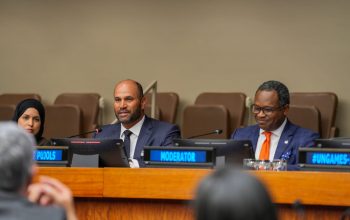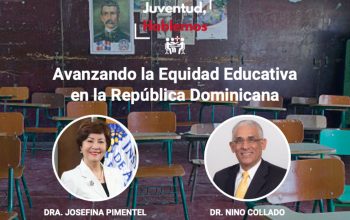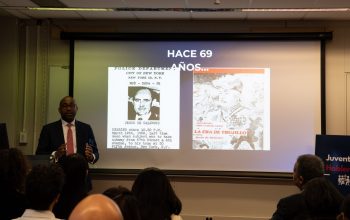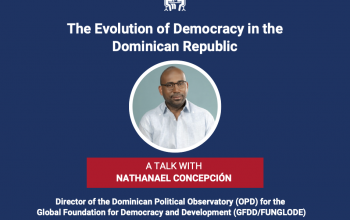news
“The True Story Behind Chronicle of a Death Foretold”, an article by Dr. Leonel Fernández
April 17, 2017
Earlier this month the news came out that Miguel Reyes Palencia, Gabriel García Márquez’s inspiration for the character Bayardo San Román in his novel Chronicle of a Death Foretold, had died in Barranquilla, Colombia, at 95 years of age.
In the story, widely considered a masterpiece, with its fluctuation between journalism and fiction, Bayardo San Román sent back his wife Angela Vicario to her parents on their wedding night
upon discovering that she was not a virgin.
After being repeatedly battered and threatened, Angela Vicario confessed that the perpetrator of her dishonor was Santiago Nasar, a lively and cordial 21-year-old of Arab origin who managed a finca inherited from his father.
Upon hearing her confession, Angela’s twin brothers, Pedro and Pablo Vicario, take it upon themselves to kill Santiago Nasar to avenge the dishonor to which their family had been
subjected.
Their macabre plans were known to everyone in the community. In fact they disseminated the news themselves, as at heart they did not want to carry out the murder and hoped someone would stop them.
Nonetheless, no one did. Nor did anyone alert Santiago Nasar that he was being pursued by the Vicario brothers who intended to murder him, as everyone assumed he already knew.
Hence from the first line of the novel the reader
already knows what will happen. It begins like this: “On the day they were going to kill him, Santiago Nasar got up at five-thirty in the morning to wait for the boat the bishop was coming on.”
The story, recounted in first person by a narrator who is none other than García Márquez himself, ends with the reality of the tragedy presaged from the first pages: the death of Santiago Nasar, for violating the sacred myth of virginity.
THE
ACTUAL EVENTS
In 2007, Miguel Reyes Palencia published the book The Truth: 50 Years Later, in which he recounts the true story of Cayetano Gentile, fictionalized as Santiago Nasar, accused of dishonoring Margarita Chicha Salas, who became Angela Vicario in Márquez’s story.
In his book, which proved a relative success, Reyes Palencia describes the episode that took place on January 20, 1951, in his native department of Sucre on
Colombia’s Caribbean coast. In a blur of disappointment and heartbreak, he nearly strangles Margarita Chica Salas, whom he had married that night.
In different interviews, Miguel even confessed that upon leaving for their honeymoon, his new spouse believed that because he was drunk he would be unable to consummate his marriage and discover the truth.
According to him, Margarita’s mother had instructed her to lead to him believe, the
following morning, that the deed had been done, with the proof being the bloodstain on the white sheet, which in fact would be mercury spilled to cover the truth.
But this was not the case. At the moment of penetration, he immediately realized that she had been with a man before him. After this discovery that she was not in fact a virgin, Margarita exclaimed between sobs, “Miguel, forgive me, I didn’t mean to offend you.”
To which he replied: “Forgive you my ass, you stupid whore.” Later, according to his own story, he returned her to his mother-in-law, Hermelinda, and brothers-in-law, Víctor and Joaquín Chica Salas, who were stunned and stupefied by what was happening.
Upon leaving the house, in his anguish and desperation, he managed to cry, “I’m bringing her back here because she’s broken!” And he left.
Miguel Reyes Palencia explains how his brothers-in-law, Víctor and Joaquín Chica (Pedro and Pablo Vicario in the novel), armed themselves with butcher knives with the aim of avenging their sister’s injury and shame.
The victim turned out to be Cayetano Gentile (Santiago Nasar), a 21-year-old student of medicine, son of an Italian immigrant of high standing and appreciation in his community.
The Chica brothers took to the streets to
bellow that they were going to kill Gentile. The news circulated everywhere. Everyone in town knew what was going to happen. The only person in the neighborhood who remained unaware was Cayetano Gentile himself.
When he realized that he was being pursued by the Chica brothers, he tried to get into his house. But at that moment he was attacked by his assailants, who wordlessly stabbed him and flayed him like an animal.
When he found out what had
happened, Miguel was terrified, worried that he might be deemed responsible for the tragedy. He asked for police protection and eventually left town, as did his disgraced wife Margarita, who moved to Sincelejo, the capital of Sucre.
TRUTH AND FICTION
According to Miguel Reyes Palencia, the future Nobel laureate witnessed these events firsthand. García Márquez, who arrived to Sucre from Aracataca when he was still a boy, was present on the night of
Reyes’s wedding. And like everyone else, he heard about what happened afterward.
It’s even said that he stated that the episode would make a terrific novel, and in fact he wrote it immediately. But it would be another 30 years until, in 1981, he published it.
His mother, Luisa Santiaga Márquez Iguarán, had vehemently begged him to forgo publication while Hermelinda Salas, mother of the disgraced Margarita Chica, remained
alive.
In 1994, several years before publishing The Truth: 50 Years Later, Miguel Reyes Palencia filed a lawsuit against the author of Chronicle of a Death Foretold, Gabriel García Márquez, and his brother Eligio García Márquez, who had published the book The Third Death of Santiago Nasar, in which he identified the real-life protagonists of the story.
Upon the filing of the suit, Reyes alleged
that both publications by the García Márquez brothers had cause him moral harm, as the disclosures altered his daily life, to the point of making him lose his own identity.
Miguel Reyes Palencia was no longer called by his real name by nearly anyone. It had been replaced by the fictional character created from his own mishap: Bayardo San Román.
What Reyes wanted as moral reparation for damages to his image and reputation was no small thing: fully 50
percent of the literary and film profits accrued to Gabriel García Márquez and his brother Eligio from the publication of their two works related to Reyes’s own lived experience.
Seventeen years later, in 2011, the High Court of the Judicial District of Barranquilla handed down a sentence rejecting Reyes Palencia’s appeal, on grounds that copyright does not apply to lived experiences, but to creations of the spirit in any field; lack of copyright
ownership on the part of the plaintiff; true facts of public knowledge; and lack of a causal connection between the alleged damages caused and the literary works.
Miguel Reyes Palencia was devastated by the death of Cayetano Gentile, as they had been good friends. Of Gabriel García Márquez he says that he was like a member of the bride’s family. García Márquez lived in that house for six or so months while his father was having money problems.
In the book, Angela Vicario wrote letters to Bayardo San Román for years without receiving a response. One day, however, he appeared unexpectedly.
He was carrying two suitcases. One held his clothes, the other the 2,000 letters that he’d never opened. He came to stay. And he was finally able to concretize what could not be done on that first fateful night.
In real life, Miguel Reyes Palencia took up with Margarita Chica Salas again.
They remained unmarried but lived as man and wife until the affection between them died.
With her hair gone snowy and skin furrowed by the years, having never revealed the true story of her life, Margarita said goodbye to this world at 78 years of age.
Reliable evidence was never found that it had actually been Cayetano Gentile who had caused her misfortune.
Nor that Santiago Nasar had caused Angela Vicario’s, in the world
of fiction.






